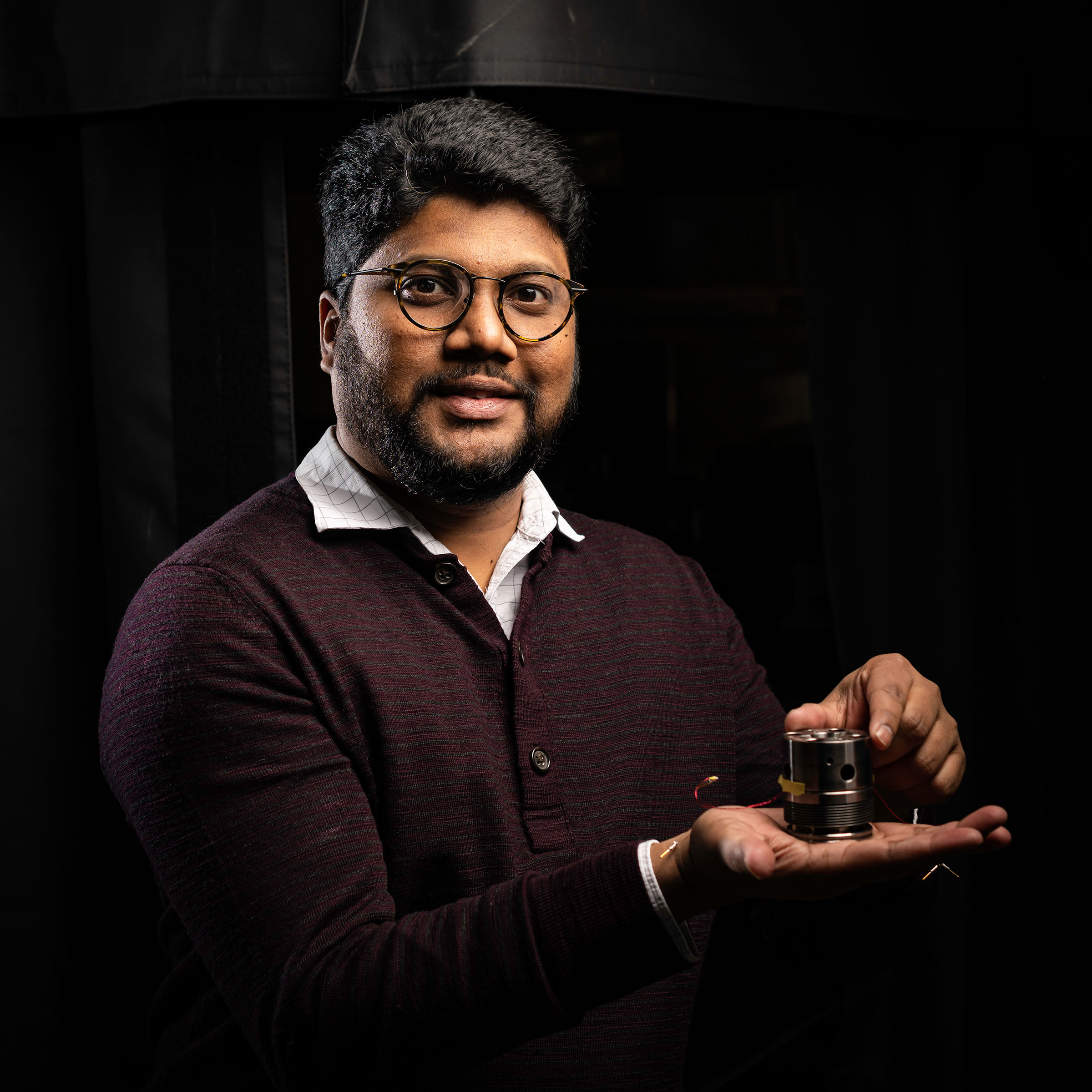Let’s be clear: hoverboards, magnetic levitation trains and resistance-free power lines are not coming this year or next. But thanks to Ranga Dias, they’re closer than they ever were. Those technologies (and many more) rely on developing new superconductors: materials through which energy can move with no resistance. The catch is that supercold temperatures have long been necessary for superconductors to work, making them impractical. So Dias, an assistant professor of mechanical engineering at the University of Rochester, came up with a solution that could pave the way for future innovations: a room-temperature superconductor that’s superdense instead of supercold. Dias developed a material made of hydrogen, sulfur and carbon, squeezed at a pressure equivalent to 2.5 million atmospheres. The extreme compression eliminates electrical resistance, allowing energy to traverse with ease. Dias is aware of the breakthrough nature of his work. “People have been trying to develop superconductors for a century,” he says. They missed their chance in the 20th. In the 21st, thanks to Dias, they just might succeed. —Jeffrey Kluger
- Cybersecurity Experts Are Sounding the Alarm on DOGE
- Meet the 2025 Women of the Year
- The Harsh Truth About Disability Inclusion
- Why Do More Young Adults Have Cancer?
- Colman Domingo Leads With Radical Love
- How to Get Better at Doing Things Alone
- Michelle Zauner Stares Down the Darkness






